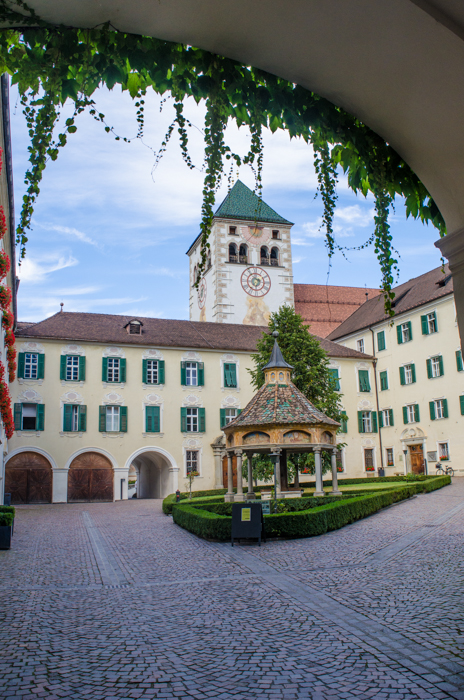 Our last stop on our upcoming Hike and Bike tour in Italy is the lovely Sudtirol town of Bressanone. Located just north of town, along the Isarco River, is the Abbazia di Novacella. The Abbazia (Abbey) was founded in 1142 by the Augustinians. In addition to addressing the spiritual and educational needs of the surrounding communities, the Abbazia also supported itself through agricultural endeavors.
Our last stop on our upcoming Hike and Bike tour in Italy is the lovely Sudtirol town of Bressanone. Located just north of town, along the Isarco River, is the Abbazia di Novacella. The Abbazia (Abbey) was founded in 1142 by the Augustinians. In addition to addressing the spiritual and educational needs of the surrounding communities, the Abbazia also supported itself through agricultural endeavors.
Throughout its 850 year history, the Abbazia played a central role in the region. The 15th and early 16th centuries were Novacella’s heyday, revealed in the magnificent altars produced for the collegiate church during this period, as well as the impressive late Gothic hall choir which embellished the church with its characteristic steep, towering roof.
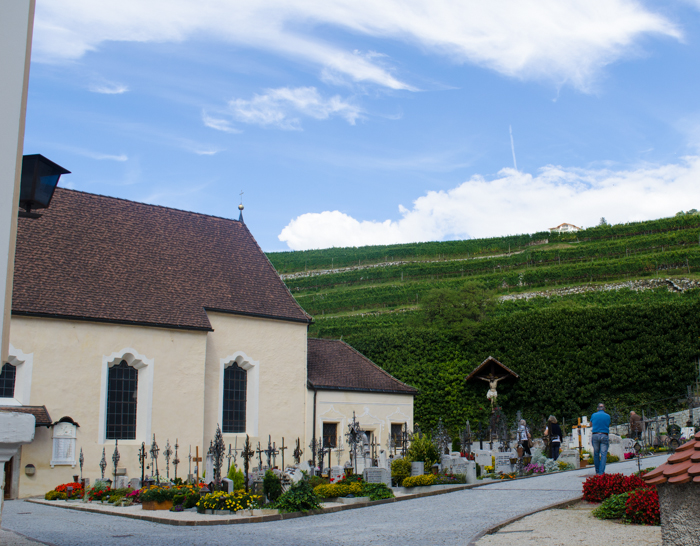 Later years saw the Abbey almost destroyed. In World War I Novacella was occupied by soldiers. Apart from the small funeral bell and the fire bell, all other bells were taken away to make weapons and were only replaced in 1922. The Second World War was even more disastrous for the Abbazia. The German Armed Forces used the monastery buildings to store armaments and set up a printing works. As a result, Novacella became the target of an Allied bombing raid on 23rd March 1945 which damaged the northern side of the collegiate church, the sacristy, the tower and the Chapel of Grace. The damage was finally repaired by restoration work in 1982.
Later years saw the Abbey almost destroyed. In World War I Novacella was occupied by soldiers. Apart from the small funeral bell and the fire bell, all other bells were taken away to make weapons and were only replaced in 1922. The Second World War was even more disastrous for the Abbazia. The German Armed Forces used the monastery buildings to store armaments and set up a printing works. As a result, Novacella became the target of an Allied bombing raid on 23rd March 1945 which damaged the northern side of the collegiate church, the sacristy, the tower and the Chapel of Grace. The damage was finally repaired by restoration work in 1982.
Today the Abbey still serves more than 20 parishes where their work involves both pastoral care as well as education. The Neustift school boarding house opened at the beginning of the 1970s to accommodate almost 100 boys. Tourism is also an important activity, and the Abbey offers guided tours of the monastery complex, and is home to The Novacella Education and Conference Centre.
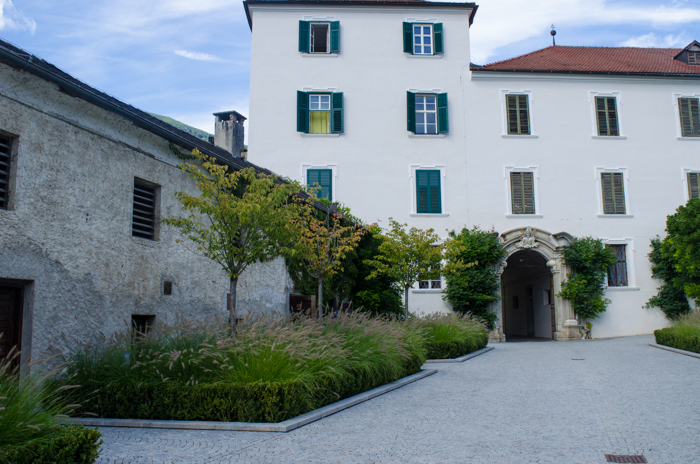 The monastery still maintains itself economically through the production and sales of agricultural products such as culinary herbs and fruit. But its most renowned product are the Abbazia di Novacella wines. The Abbazia now boasts an international reputation as an award-winning winery. It is home to a small wine making school, and in 2009, Italy’s Gambero Rosso named Celestino Lucin, the abbey’s enologist, Winemaker of the Year.
The monastery still maintains itself economically through the production and sales of agricultural products such as culinary herbs and fruit. But its most renowned product are the Abbazia di Novacella wines. The Abbazia now boasts an international reputation as an award-winning winery. It is home to a small wine making school, and in 2009, Italy’s Gambero Rosso named Celestino Lucin, the abbey’s enologist, Winemaker of the Year.
The Abbazia di Novacella is located in the Alto Adige Valle Isarco DOC. Also known as Sudtirol Eisacktaler, is Italy’s northernmost wine region on the southern side of the Alps. The mineral-rich soils, the elevation (1,970 ft – 2,950 ft) and the cool climate are all factors which produce intense aromas and flavors as well as fruity, mouth-watering acidity found in wines produced from the typical white Valle Isarco valley grape varieties. The most widely-grown whites in the vineyards around Varna just north of Bressanone are Sylvaner, Kerner, Gewürztraminer and Veltliner.
The Abbazia also owns vineyards in the warm central region of Alto Adige which supply the red grapes. They include the full-bodied, savory Lagrein from the Mariaheim vineyard in Bolzano and red wines from the Marklhof estate in the cool rolling hills of Cornaiano to the south of Bolzano where the grapes are harvested, crushed and the wines matured. The wines include Vernatsch, Pinot Nero and the sweet Moscato Rosa.
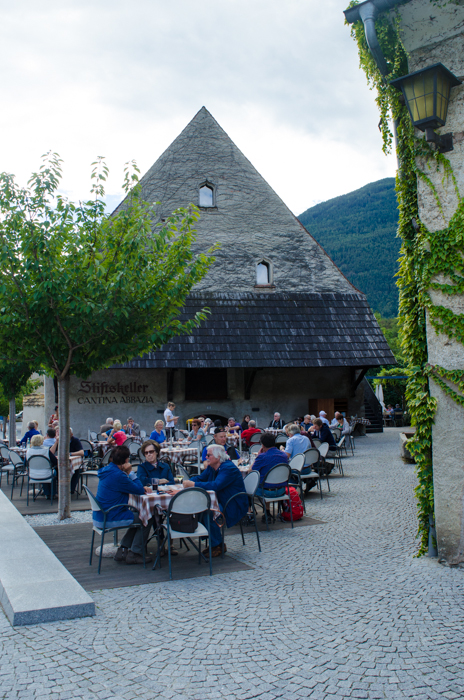 Visitors can take a tour of the monastery, try products from the monastery’s own estates in the monastery cellar, including the Novacella wines, brandies, apple juice, elderflower cordial and the Novacella herbal infusions. The Abbazia also offers guided tours of the wine estate followed by a tasting of their wines. Reservations for the latter are required.
Visitors can take a tour of the monastery, try products from the monastery’s own estates in the monastery cellar, including the Novacella wines, brandies, apple juice, elderflower cordial and the Novacella herbal infusions. The Abbazia also offers guided tours of the wine estate followed by a tasting of their wines. Reservations for the latter are required.
A few wines I recommend you check out:
Praepositus Kerner
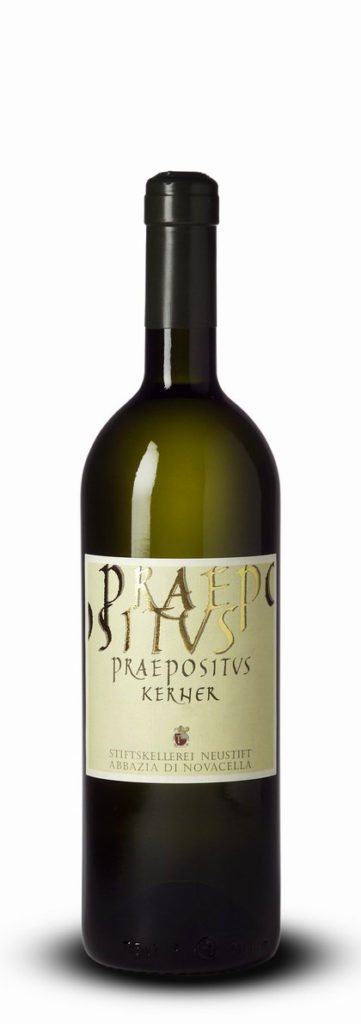
The Praepositus (translation: warden/provost/prior of an abbey) line represents the very best expression of Abbazia’s vineyards. They are not single-vineyard wines, but selections of the best fruit from the best sites.
The Kerner grape is white grape variety, with a very intense aroma. Originally developed in Germany, It was bred in 1929 by August Herold by crossing the red grape Trollinger, which is known in Italy as Schiava or Vernatsch, with the white grape Riesling. The name Kerner was chosen as a tribute to a poet and physician, Justinus Kerner, who wrote songs and poetry on wine. The wines made from this varietal are wonderfully rich in flavor, with bright floral aromas and a full, fruity palate.
The 2015 Praepositus Kerner was awarded 95 points by Wine Enthusiast, and 92 points by James Suckling. Wine Enthusiast said “You’ll need to swirl the glass a few times to release the enticing scents of yellow stone fruit, Alpine herb and an intriguing smoky note. The savory vibrant palate is more expressive, delivering layers of crunchy green apple, zesty tangerine and juicy yellow peach set against crisp acidity. A flinty mineral note graces the lingering finish, lending even more depth.”
Gewurztraminer
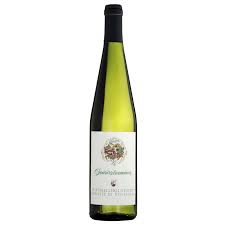 Gewurztraminer, or “spicy” Traminer, originated in Sudtirol. Traminer is one of the oldest grapes in the world, and recent studies have demonstrated that it is the ancestor of some of the oldest grape varieties in the world, including Cabernet Sauvignon, Riesling, Pinot Bianco, Grigio and Noir. An intensely aromatic and elegant wine, its pink to reddish grapes are naturally sweet, and produce a white wine that is usually off-dry, with a strong scent of lychee.
Gewurztraminer, or “spicy” Traminer, originated in Sudtirol. Traminer is one of the oldest grapes in the world, and recent studies have demonstrated that it is the ancestor of some of the oldest grape varieties in the world, including Cabernet Sauvignon, Riesling, Pinot Bianco, Grigio and Noir. An intensely aromatic and elegant wine, its pink to reddish grapes are naturally sweet, and produce a white wine that is usually off-dry, with a strong scent of lychee.
A delicate floral aroma with a whiff of tropical fruits. Full-bodied and lush, but dry with a crisp acidity.
Santa Magdalener
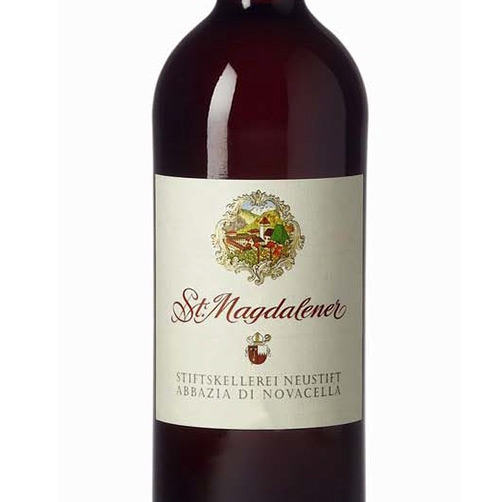 Santa Magdalener wines are a red wine produced from the native Schiava grapes, also known as Vernatsch. These wines are blends, containing up to 15% of other varieties of grapes, most commonly Lagrein, another native varietal, as well as Pinot Noir. Typically, as with the Abbazia di Novacella offering, these wines include at least 5% Lagrein.
Santa Magdalener wines are a red wine produced from the native Schiava grapes, also known as Vernatsch. These wines are blends, containing up to 15% of other varieties of grapes, most commonly Lagrein, another native varietal, as well as Pinot Noir. Typically, as with the Abbazia di Novacella offering, these wines include at least 5% Lagrein.
A bright ruby red, with hints of floral and cherry fruit on the nose. It is crisp, lively, and full of cherry flavor, with just a bit of acidity and tannin to balance.
Praepositus Pinot Nero Riserva
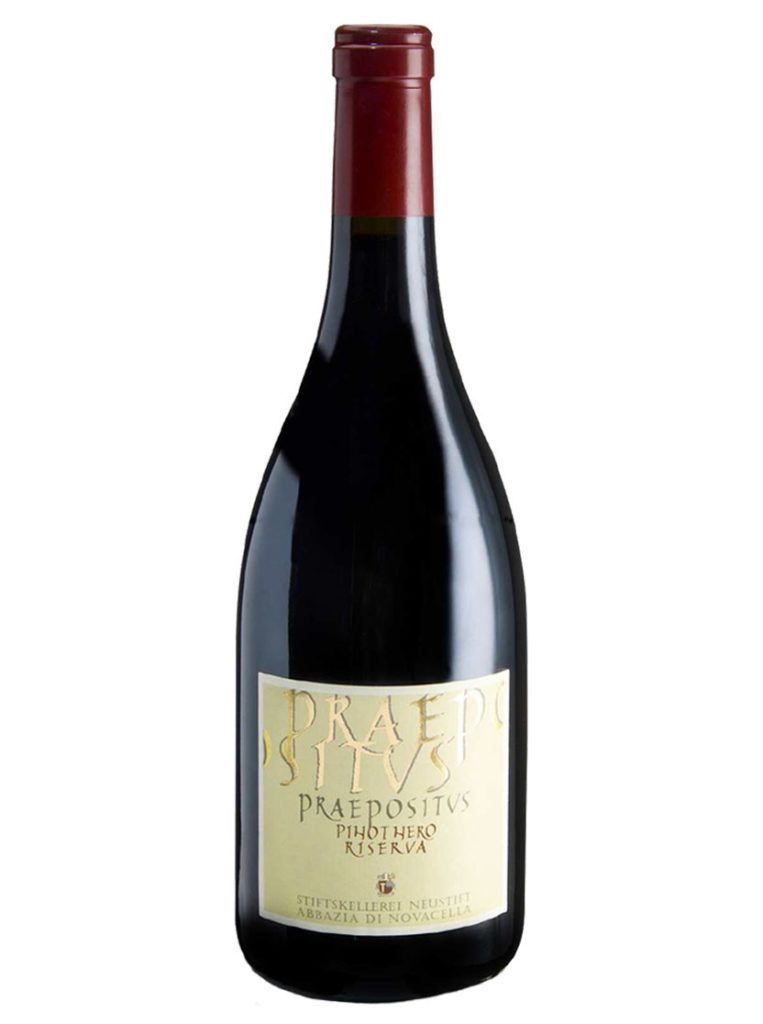
One of the Abbazia’s flagship wines, this 100% Blauburgunder (Pinot Nero/Pinot Noir) hails from gravelly marine soils at elevation of 350 meters. Fermentation takes place in stainless steel for 20 days, followed by malolactic fermentation and maturation over 18 months in French barriques.
A stylish and sophisticated Pinot Noir, rather than full-bodied and muscular. Medium ruby with a fresh, fruity nose, aromatic, supple and luscious with hints of red currants, smooth tannins and a discreet whiff of spicy oak.
